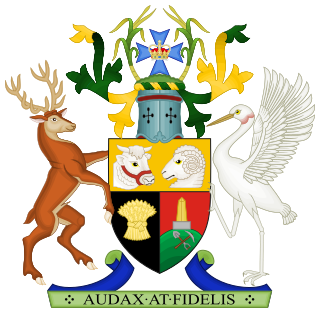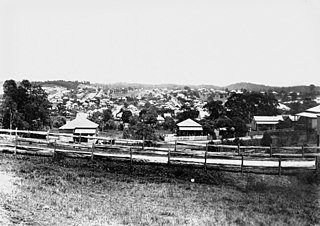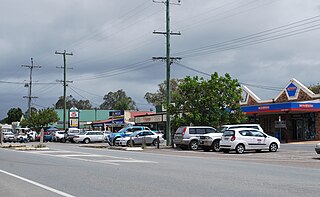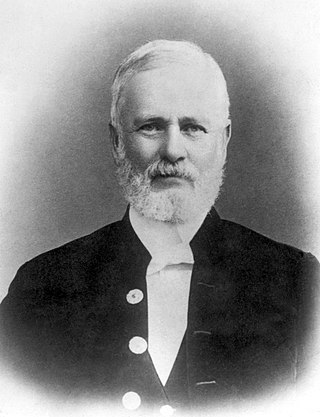
Sandgate is a northern coastal suburb in the City of Brisbane, Queensland, Australia. In the 2021 census, Sandgate had a population of 4,926 people.

Gordon Park is a northern suburb in the City of Brisbane, Queensland, Australia. In the 2016 census, Gordon Park had a population of 4,231 people.

The Supreme Court of Queensland is the highest court in the Australian State of Queensland. It was formerly the Brisbane Supreme Court, in the colony of Queensland.

Justice Alfred James Peter Lutwyche, Queen's Counsel was the first judge of the Supreme Court Bench of Queensland.

Lutwyche is a northern suburb in the City of Brisbane, Queensland, Australia. In the 2016 census, Lutwyche had a population of 3,454 people.

Caboolture is a town and suburb in the City of Moreton Bay, Queensland, Australia. In the 2021 census, the suburb of Caboolture had a population of 29,534 people. It is located on the northern side of the Caboolture River.

Kedron is a northern suburb in the City of Brisbane, Queensland, Australia. In the 2016 census, Kedron had a population of 9,359 people. It is home to the Queensland Fire and Emergency Services headquarters.

Windsor is an inner northern suburb in the City of Brisbane, Queensland, Australia. In the 2016 census, Windsor had a population of 7,013 people.

Kalinga is a suburb in the City of Brisbane, Queensland, Australia. In the 2016 census, Kalinga had a population of 2,126 people.

William Landsborough was an explorer of Australia and notably he was the first explorer to complete a North-to-South crossing of Australia. He was a member of the Queensland Legislative Council.

Woodford is a rural town and locality in the City of Moreton Bay, Queensland, Australia. In the 2016 census, the locality of Woodford had a population of 3,458 people.

Morayfield is a town and suburb in the City of Moreton Bay, Queensland, Australia. In the 2016 census, the suburb of Morayfield had a population of 21,394 people.

RMS Quetta was an iron-hulled steamship that was built in Scotland in 1881 and wrecked with great loss of life in the Torres Strait in 1890. She was operated by British India Associated Steamers (BIAS), which was controlled by the British India Steam Navigation Company (BISN). She was wrecked on a previously unknown rock, which has been called Quetta Rock ever since. The Underwater Cultural Heritage Act 2018 protects the wreck.

Wamuran is a rural town and locality in the City of Moreton Bay, Queensland, Australia. In the 2016 census, the locality of Wamuran had a population of 3,196 people.
Charles Tiffin (1833–1873) was an English architect, who spent most of his career in Queensland, Australia where he held the post of Queensland Colonial Architect.

Henry Challinor was a physician and politician in the Colony of Queensland.

William Henry Yaldwyn was a member of the Queensland Legislative Council.

Morayfield Plantation is a heritage-listed ruins of a sugarcane plantation at 34 Nolan Drive, Morayfield, City of Moreton Bay, Queensland, Australia. It was built in circa 1860s. It was added to the Queensland Heritage Register on 13 May 2011.

Oaklands Sugar Mill is a heritage-listed remains of a former sugar cane mill at 68 Captain Whish Avenue, Morayfield, City of Moreton Bay, Queensland, Australia. It was built in 1865. It is also known as Whish's Sugar Mill Remnants. It was added to the Queensland Heritage Register on 18 September 2009.

John Ewen Davidson was a colonist sugar planter, slave owner, murderer, and miller in Queensland.




















